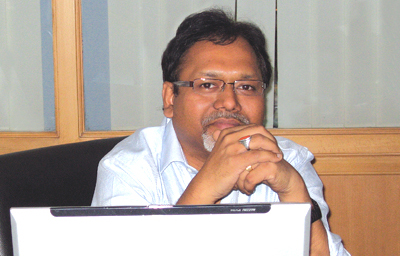INDIAN ARMED FORCES CHIEFS ON OUR RELENTLESS AND FOCUSED PUBLISHING EFFORTS

The insightful articles, inspiring narrations and analytical perspectives presented by the Editorial Team, establish an alluring connect with the reader. My compliments and best wishes to SP Guide Publications.

"Over the past 60 years, the growth of SP Guide Publications has mirrored the rising stature of Indian Navy. Its well-researched and informative magazines on Defence and Aerospace sector have served to shape an educated opinion of our military personnel, policy makers and the public alike. I wish SP's Publication team continued success, fair winds and following seas in all future endeavour!"

Since, its inception in 1964, SP Guide Publications has consistently demonstrated commitment to high-quality journalism in the aerospace and defence sectors, earning a well-deserved reputation as Asia's largest media house in this domain. I wish SP Guide Publications continued success in its pursuit of excellence.
A Word from Editor

Birth, growth and maturity make for a complete cycle in any development process. So even as business aviation takes India by storm, harsh ground realities demand a closer inspection and a blast from the past reminds us from where it all started.
Several notches above the Business Class is the fastemerging Elite Class—a bracket born of the shrinking gap between affordability of a business jet and the purchasing power of a large number of business houses and businessmen. India, home to 53 billionaires and 1,00,000 millionaires, is enmeshed in the thralls of the luxury, power and prestige associated with owning a pair of wings. The comparison to sports cars is not just on account of sleek looks and speed, there is also the subliminal linkage which renders business jets objects of desire, symbols of status and something you must have if the Jones’s possess one.
Capturing the hype and ooh-la-la, Group Captain A.K. Sachdev rightly surmises: What Internet did to out-of-office work, the new class of business jets will do for in-flight work. And perhaps the flamboyant Dr Vijay Mallya will bring production of these glamourous wings to India? News is Dr Mallya’s UB Group has initiated talks with France-based EADS Socata, a leading aircraft manufacturer, to co-develop business jets. Flipping the coin, Joseph Noronha pragmatically observes that Indian business aviation faces daunting challenges, including woeful infrastructure.
A combination of pragmatism and pace hold the key for the smooth transition of the MMRCA deal. Good news is all the six contenders met the revised deadline in submitting individual responses by April 28 to the Request for Proposal. Bad news would be the hint of any credence to rumours of certain anomalies that might force a redo of the RFP exercise. Even as InFocus and Forum deliberate on the nuances of the deal and the aircraft on offer, SP’s directed a quickfire round at the contestants. Of the six frontrunners, three replied. Stealing a march, Boeing played host to an entourage of mediapersons and pundits, including self, at a whirlwind tour of its various facilities and operation hubs in the US. A detailed analysis of the C-17 heavy airlift capability transport aircraft in this edition is the first in a series of articles on Boeing’s wares.
On a sombre note, the Last Word scans the April 29 episode when a brand new Hawk, among the fleet of 10 recently acquired by the Indian Air Force, crashed at Air Force Station Bidar. India, notes Air Marshal (Retd) B.K. Pandey, is well aware of the price that has been paid in terms of lives and aircraft lost in the last two decades owing essentially to enigmatic procrastination in the induction of the Hawk.
Hall of Fame, this time around, presents the pièce de résistance. Quite fittingly so, while the Cover Story captures the exciting prospects of the emerging new trends in business aviation, the Hall of Fame reminiscences on the Wright brothers— the first to demonstrate that sustained flight was possible with heavier-than-air machines. A humbling account of the pioneers who gave the human race its wings.





